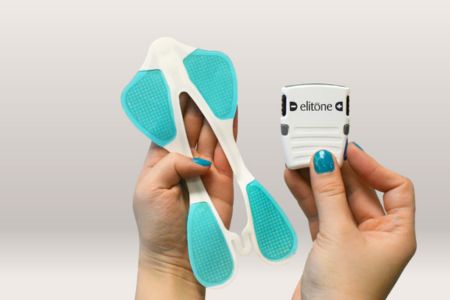
Electrical Stimulation for Incontinence
Learn about the benefits of electrical stimulation for incontinence.
If you’ve experienced bladder leakage, you’ve probably learned that the first line of defense against stress urinary incontinence (SUI) is mastering Kegel exercises. Most doctors recommend using Kegels to tone and improve pelvic floor muscles as a first step to remedy leaky bladders. But with 1 out of 4 women performing Kegel exercises incorrectly, you may not be seeing the results you wanted. Keep reading to learn how to stop leaky bladders without doing Kegel exercises.
The good news is that several options may help stop leaky bladders without performing Kegels on your own. The downside is that most of these treatments require office visits. Here’s an overview of how these alternative incontinence treatments work to stop leaky bladders. For a summary of at-home incontinence treatments, such as Kegel devices, check out this chart to learn about Kegel exercisers that do your Kegels for you in the comfort of your home.
Magnetic chair treatment is similar to electrical stimulation (e-stim) devices because they both create electric currents to stimulate Kegel exercises. To use the chair, patients schedule a session with their clinician and simply sit on the chair, fully clothed, while the electrical currents contract their pelvic floor. Brand: BTL Emsella.
Pros:
Cons:
These synthetic and nonsynthetic materials aim to bulk up the area around the urethra so the resulting smaller opening makes it easier to control leaky bladders. These injections may have quick results, but repeat treatments are necessary for long-term results.
Pros:
Cons:
These types of therapies use probes inserted into the vagina to deliver laser, radiofrequency, or red light pulses. These therapies try to increase blood flow to the vaginal wall and surrounding areas in order to stimulate collagen production or create scar tissue to bulk up the area around the urethra, ultimately creating a smaller opening to restrict urine leakage. However, collagen may affect appearance but does not affect muscles.
Pros:
Cons:
Botox injections, sacral nerve stimulation implants, and tibial nerve stimulation are only used for urgency, overactive bladders, and urge urinary incontinence (UUI). This type of incontinence often involves some form of nerve damage, rather than a stretching or weakness of the pelvic floor muscles. Learn more about UUI here.
Because there are no medications for SUI, patients might think that surgery is the only option. But there are a variety of nonsurgical treatments, including at-home therapies that work on strengthening your pelvic floor muscles. Surgery for incontinence has been controversial, so make sure to do your research and consult your doctor about the risks involved. Click here to learn more about surgery for SUI.
The more you know about pelvic floor health, the better equipped you’ll be to choose the treatment that’s right for you. If you don’t have time to visit a doctor’s office and want a solution for your bladder leakage, check out these articles to explore pelvic health and incontinence.